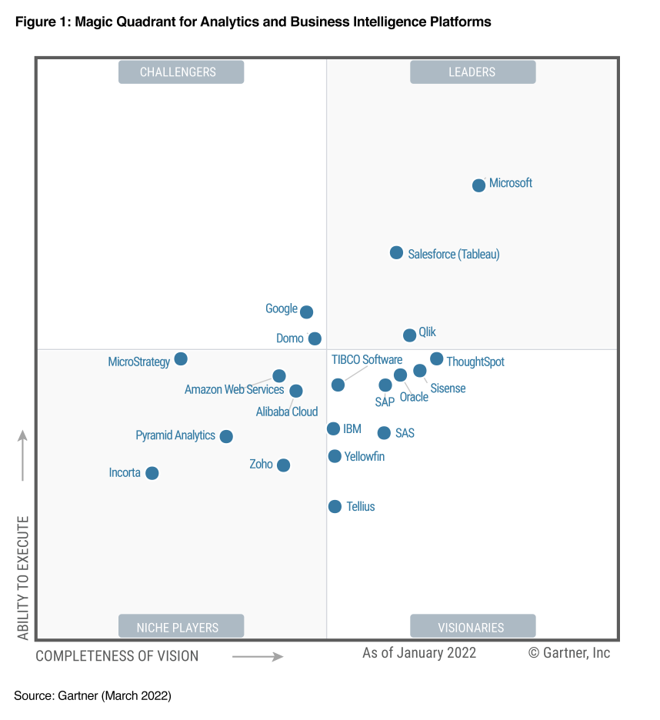In today’s data-driven world, are you confident you’re making the most informed decisions for your business? The sheer volume of information can be overwhelming, making it challenging to identify the most effective Business Intelligence (BI) tools and strategies.
This is where the Gartner BI Report, formally known as the Magic Quadrant for Analytics and Business Intelligence Platforms, becomes invaluable. It’s a comprehensive analysis that evaluates leading BI vendors based on their vision and ability to execute, offering a structured framework for understanding the competitive landscape.
This article delves into the significance of the Gartner BI Report, exploring its methodology, key findings, and practical implications for organizations seeking to leverage data effectively. We’ll unpack how to interpret the report, identify suitable BI solutions for your specific needs, and ultimately, make smarter, data-backed decisions that drive business success.
Decoding the Gartner BI Report: What It Means for Your Business
The Gartner Business Intelligence (BI) report! It’s a hefty document that can feel like deciphering an ancient scroll. But fear not! This article simplifies it, so you can understand what it signifies.
It’s a snapshot of the BI and analytics platform market, ranking vendors, highlighting trends, and offering insights into the future. Think of it as a compass guiding you through the complex world of data.
It is designed to assist business leaders in selecting a BI platform that aligns with their specific requirements. The report also takes into account factors such as the organization’s size, industry, and desired use cases.
Ultimately, this report can be a powerful tool for making informed decisions and driving business success with data. The key is to understand how to read it and apply its insights to your unique situation.
Understanding the Magic Quadrant
At its core, the Gartner BI report features the “Magic Quadrant,” a visual representation of vendor positioning. It plots companies based on their “Ability to Execute” and “Completeness of Vision.”
Leaders are those who excel in both, establishing a strong presence in the market. Challengers have significant execution but a less defined vision. Niche Players focus on specific market segments.
Visionaries possess a strong vision but are still building their execution capabilities. Keep in mind, the quadrant is not a definitive ranking. Your specific needs are paramount.
Understanding where each vendor falls in the Magic Quadrant helps you quickly narrow down your choices. It highlights the major players and those to watch in the BI landscape. So, use this understanding as you find the best BI platform.
Key Trends Highlighted in the Report

Beyond vendor rankings, the Gartner BI report delves into crucial market trends. These insights are valuable for anticipating future challenges and opportunities in data analytics.
Expect to see discussions on the rise of augmented analytics, which uses AI to automate insights. This can empower non-technical users to explore data more effectively.
Data storytelling is another trend gaining traction, emphasizing the need to communicate insights in a clear, engaging way. The cloud’s continued dominance in BI deployments will also be highlighted.
Focus on emerging technologies, such as artificial intelligence, machine learning, and natural language processing. All of these elements are expected to have a considerable effect on how businesses analyze and use data.
The importance of data governance and security is another key theme. Keeping this in mind ensures data accuracy and compliance. These key trends are critical in adapting your business strategy.
How to Use the Report for Vendor Selection
The Gartner BI report is most effective when used as part of a larger vendor selection process. Don’t rely solely on the quadrant placement. Consider your specific needs and priorities.
Identify your key business requirements. What types of data do you need to analyze? What insights are you seeking to uncover? Who will be using the BI platform?
Evaluate vendors based on their ability to meet those requirements, looking beyond the Magic Quadrant. Read the detailed vendor profiles in the report for deeper insights.
Pay close attention to customer reviews and references to get a real-world perspective on each vendor’s strengths and weaknesses. This complete view can inform your decision.
Beyond the Hype: Practical Considerations
While the Gartner BI report provides a valuable overview, it’s crucial to consider practical aspects. Think about the total cost of ownership, including licensing, implementation, and training.
Assess the ease of use of the platform and its compatibility with your existing infrastructure. A solution that integrates seamlessly will save you time and resources.
Consider the vendor’s support and training offerings. A robust support system can be invaluable when you encounter challenges. So, remember that support is available.
Don’t forget to factor in scalability. Can the platform grow with your business as your data needs evolve? Planning for the future is critical. A scalable solution can adapt to your business growth.